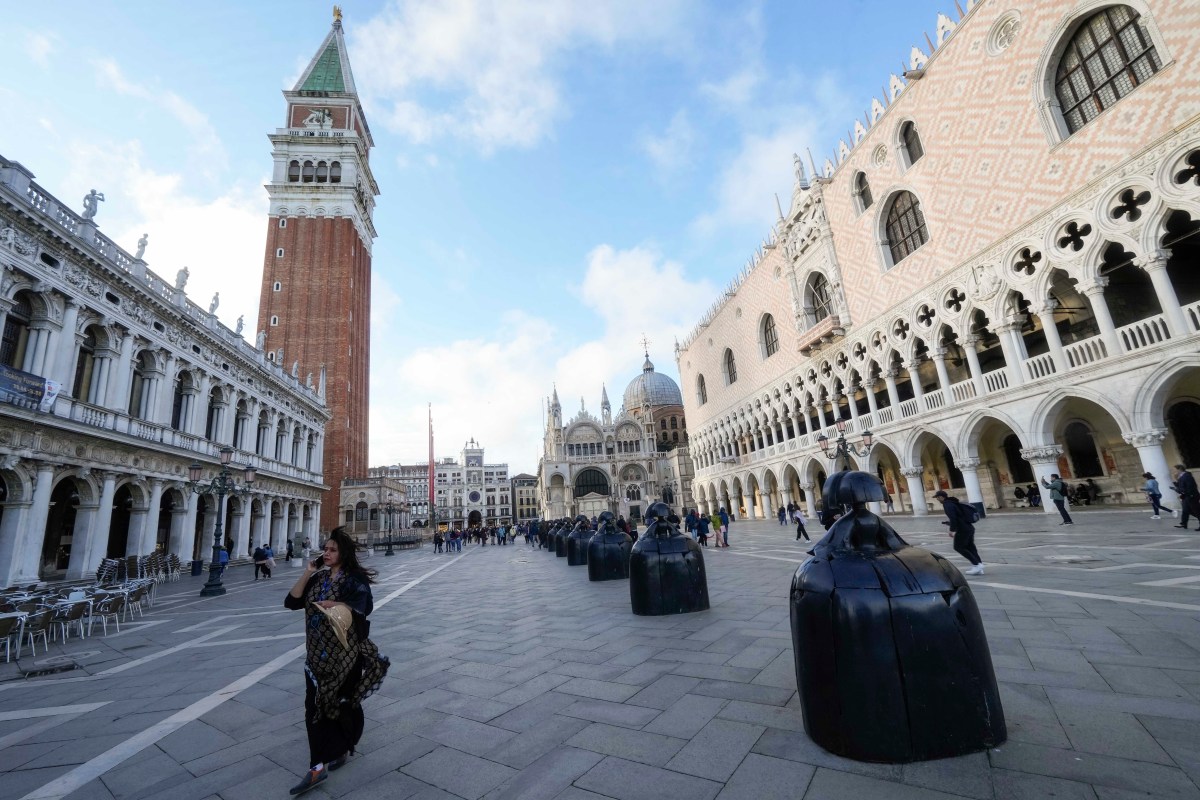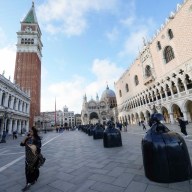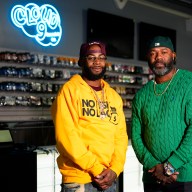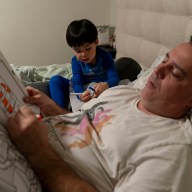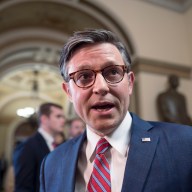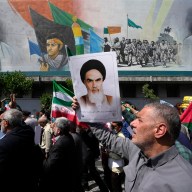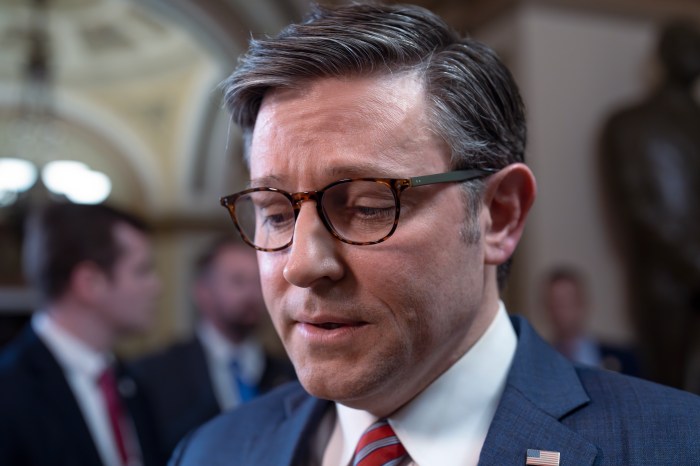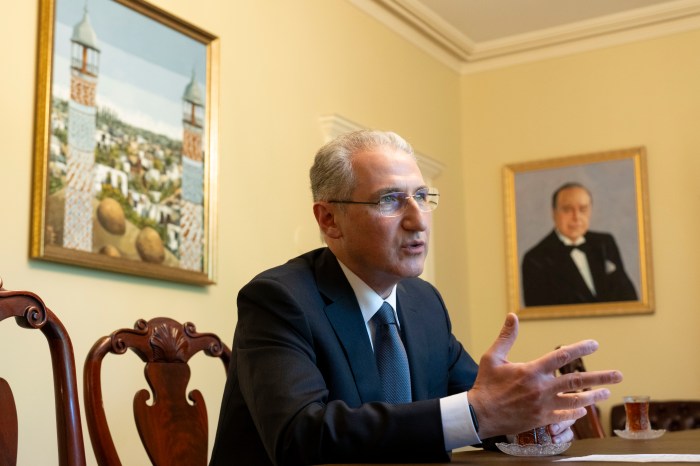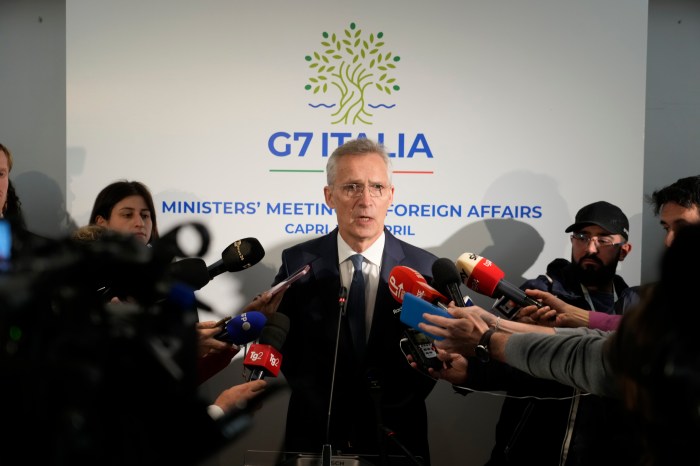VENICE, Italy (AP) — Outsider, queer and Indigenous artists are getting an overdue platform at the 60th Venice Biennale contemporary art exhibition that opens Saturday, curated for the first time by a Latin American.
Brazilian curator Adriano Pedrosa’s main show, which accompanies 88 national pavilions for the seven-month run, is strong on figurative painting, with fewer installations than recent editions. A preponderance of artists are from the Global South, long overlooked by the mainstream art world circuits. Many are dead — Frida Kahlo, for example, is making her first appearance at the Venice Biennale. Her 1949 painting “Diego and I” hangs alongside one by her husband and fellow artist, Diego Rivera.
Despite their lower numbers, living artists have “a much stronger physical presence in the exhibition,” Pedrosa said, with each either showing one large-scale work, or a collection of smaller works. The vast majority are making their Venice Biennale debut.
Visitors to the two main venues, the Giardini and the Arsenale, will be greeted by a neon sign by the conceptual art cooperative Claire Fontaine with the exhibition’s title: “Stranieri Ovunque — Foreigners Everywhere.” A total of 60 in different languages hang throughout the venues.
When taken in the context of global conflicts and hardening borders, the title seems a provocation against intransigent governments — at the very least a prod to consider our shared humanity. Through artists with underrepresented perspectives, the exhibition address themes of migration and the nature of diaspora as well as indigeneity and the role of craft.
“Foreigners everywhere, the expression has many meanings,’’ Pedrosa said. “One could say that wherever you go, wherever you are, you are always surrounded by foreigners. … And then in a more personal, perhaps psychoanalytic subjective dimension, wherever you go, you are also a foreigner, deep down inside.”
“Refugee, the foreigner, the queer, the outsider and the Indigenous, these are the four subjects of interest in the exhibition,” he said.
Some highlights from the Venice Biennale, which runs through Nov. 26:
Facing the threat of protests, the Israel Pavilion stayed closed after the artist and curators refused to open until there is a cease-fire in Gaza and the Israeli hostages taken by Hamas are released.
Ukraine is making its second Biennale art appearance as a country under invasion; soft diplomacy aimed at keeping the world focused on the war. Russia has not appeared at the Biennale since the Ukraine invasion began, but this time its historic 110-year-old building in the Giardini is on loan to Bolivia.
For a short time during this week’s previews, a printed sign hung on the Accademia Bridge labeling Iran a “murderous terrorist regime,” declaring “the Iranian people want freedom & peace.” The venue for the Iranian pavilion was nearby, but there was no sign of activity. The Biennale said it would open Sunday — two days after the departure from Italy of G7 foreign ministers who warned Iran of sanctions for escalating violence against Israel.
As a queer artist born in South Korea and working in Los Angeles, Kang Seung Lee said he identified with Pedrosa’s “invitation to look at our lives as foreigners, but also visitors to this world.”
His installation, “Untitled (Constellations),” which considers the artists who died in the AIDS epidemic through a collection of objects, is in dialogue with spare paper-on-canvas works by the late British artist Romany Eveleigh, who died in 2020. “The works speak to each other, an intergenerational conversation, of course,’’ said Lee, 45, whose works have been shown in international exhibitions, including Documenta 15. This is his first Venice Biennale.
Nearby, transexual Brazilian artist Manauara Clandestina presented her video “Migranta,” which speaks about her family’s story of migration. “It’s so strong, because I can hear my Daddy’s voice,’’ she said. Clandestina, who hails from the Amazon city of Manaus, embraced Pedrosa during a press preview marking her Venice debut. She said she continues to work in Brazil, despite discrimination and violence against transgender people.
The Giardini hosts 29 national pavilions representing some of the oldest participating nations, like the United States, Germany, France and Britain. More recent additions show either in the nearby Arsenale, or choose a venue further afield, like Nigeria did this year in Venice’s Dorsoduro district.
The Nigerian Pavilion, in a long-disused building with raw brick walls that exude potential, houses an exhibition that spans mediums — including figurative art, installation, sculpture, sound art, film art and augmented reality — by artists living in the diaspora and in the homeland.
“These different relationships to the country allow for a very unique and different perspectives of Nigeria,’’ said curator Aindrea Emelife. “I think that it’s quite interesting to consider how leaving a space creates a nostalgia for what hasn’t been and allows an artist to imagine an alternative continuation to that. The exhibition is about nostalgia, but it’s also about criticality.”
The eight-artist Biennale exhibition “Nigeria Imaginary” will travel to the Museum of West African Art in Benin City, Nigeria, where Emelife is curator, which will give it “a new context and a new sense of relevancy,’’ she said.
Ghana-born British artist John Akomfrah created eight multimedia film- and sound-based works for the British Pavilion that looks at what it is to be “living as a figure of difference” in Britain. Images of water are a connecting device, representing memory.
“In the main, I’m trying to tease out something about collective memory, the things that have informed a culture, British culture let’s say, over the last 50 years,’’ Akomfrah told The Associated Press. “As you go further in, you realize we’re going further back. We end up going to the 16th century. So it’s an interrogation of 500 years of British life.”
Considering the question of equity in the art world, Akomfrah indicated the adjacent French Pavilion — where French-Caribbean artist Julien Creuzet created an immersive exhibition — and the Canadian Pavilion on the other side, featuring an exhibition examining the historic importance of seed beads by Kapwani Kiwanga, who is in Paris.
“I mean, this feels like a very significant moment for artists of color,’’ said Akomfrah, who participated in the Ghana Pavilion in 2019. “Because I’m in the British Pavilion. Next to me is the French one, with an artist, Julien, who I love a lot, of African origin. And then next to me is a Canadian pavilion that has a biracial artist, again, with African heritage.
“So that’s certainly not happened before, that three major pavilions have artists of color inhabiting, occupied, making work in them. And that feels like a breakthrough,” he said.

